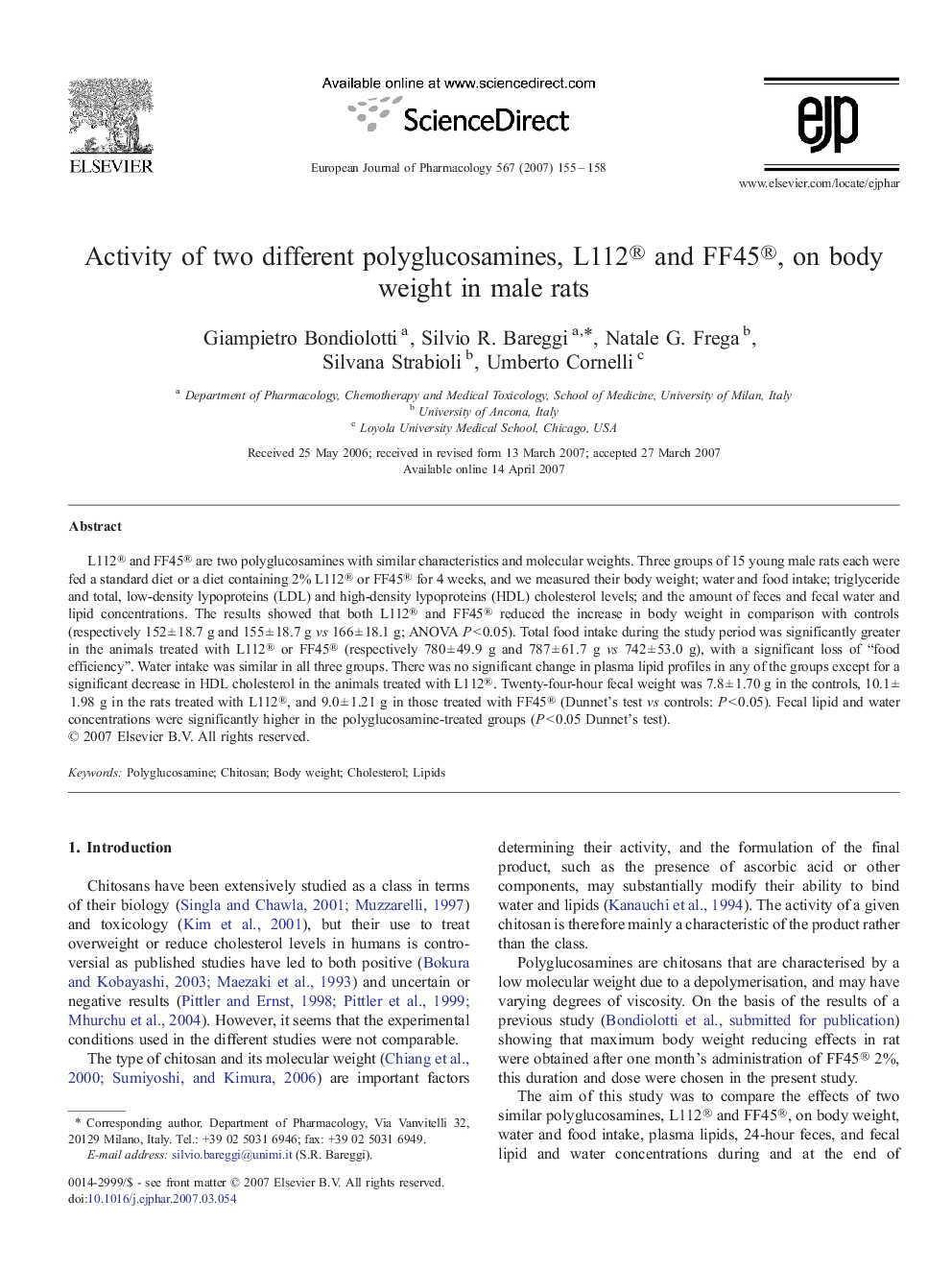| Article ID | Journal | Published Year | Pages | File Type |
|---|---|---|---|---|
| 2536121 | European Journal of Pharmacology | 2007 | 4 Pages |
L112® and FF45® are two polyglucosamines with similar characteristics and molecular weights. Three groups of 15 young male rats each were fed a standard diet or a diet containing 2% L112® or FF45® for 4 weeks, and we measured their body weight; water and food intake; triglyceride and total, low-density lypoproteins (LDL) and high-density lypoproteins (HDL) cholesterol levels; and the amount of feces and fecal water and lipid concentrations.The results showed that both L112® and FF45® reduced the increase in body weight in comparison with controls (respectively 152 ± 18.7 g and 155 ± 18.7 g vs 166 ± 18.1 g; ANOVA P < 0.05). Total food intake during the study period was significantly greater in the animals treated with L112® or FF45® (respectively 780 ± 49.9 g and 787 ± 61.7 g vs 742 ± 53.0 g), with a significant loss of “food efficiency”. Water intake was similar in all three groups. There was no significant change in plasma lipid profiles in any of the groups except for a significant decrease in HDL cholesterol in the animals treated with L112®. Twenty-four-hour fecal weight was 7.8 ± 1.70 g in the controls, 10.1 ± 1.98 g in the rats treated with L112®, and 9.0 ± 1.21 g in those treated with FF45® (Dunnet's test vs controls: P < 0.05). Fecal lipid and water concentrations were significantly higher in the polyglucosamine-treated groups (P < 0.05 Dunnet's test).
